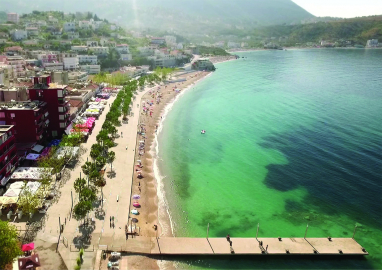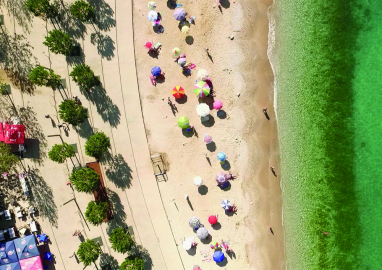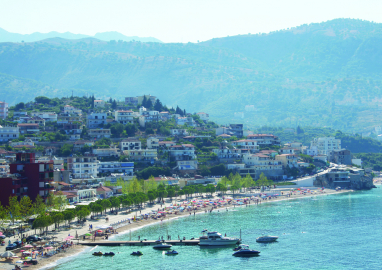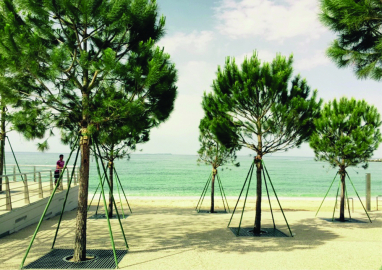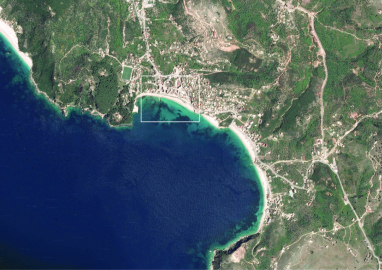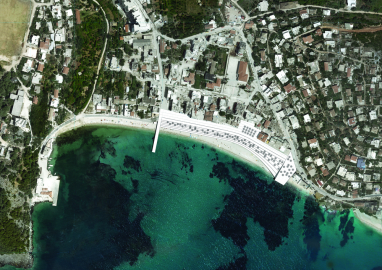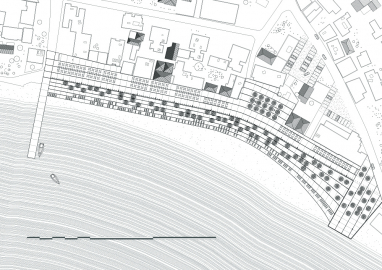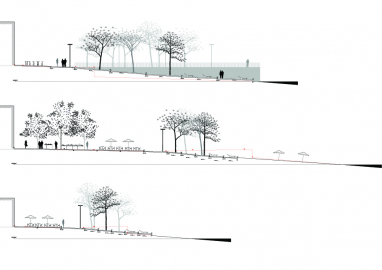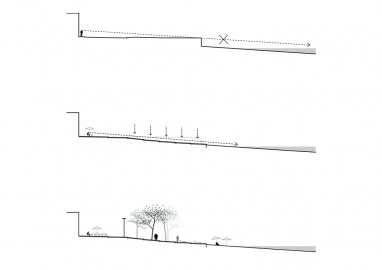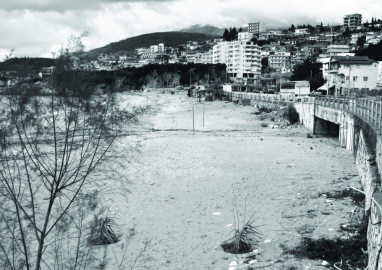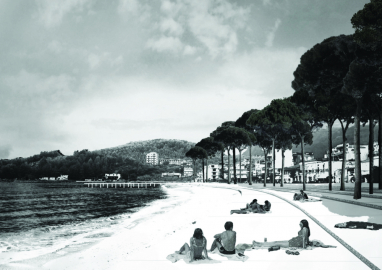Himara Waterfront
The Himara Waterfront project has radically transformed the relationship between the city and the sea. Before, a raised boardwalk limited the access to the beach, while parked cars blocked the view on the water. Today, a sequence of platforms gently slope down towards the sea, creating an inviting waterfront and establishing Himara as a true beach town
Himara is a sleepy beach town in southern Albania with great potential for tourism. It has a beautiful coastline along the Ionian Sea with white sandy beaches. The city wanted to improve its connection with the beach, which had been cut by the construction of a two meter high flood wall on which a boardwalk and a road had been built. As a result the sea was hardly visible and the beach was difficult to access.
The project became the opportunity to drastically rethink the relationship between the city and the sea. The retaining wall was demolished and replaced with terraced platforms, greatly improving the absorption of the impact of the waves.
The new waterfront makes the sea visible and the beach accessible over a three hundred meter stretch while the plantation of pine trees provides shade and gives identity to the waterfront.
A new jetty allows boats to dock and offers new views of the city.
The connection between the city and the sea had been interrupted for two reasons. The first one was the height difference between the boardwalk and the beach, caused by the construction of a flood wall. With the help of a maritime engineer we transformed this linear high wall into a series of stepped terraces, that respond much better to the impact of the waves. The lay-out of the platforms follows the breaking of the waves, creating a gracious curve along the waterfront.
A second problem were the cars that had invaded the boardwalk. We proposed a change in two phases. Firstly we eliminated the parking along the waterfront, leaving only a narrow road the the hotels and the restaurants. Secondly, that passage was restricted to delivery and emergency access. Today the beach and the waterfront have become one continuous car-free public space, allowing a direct relationship between the terraces of the restaurants and the beach.
Since its completion the waterfront has changed the behaviour of both residents and tourists. New restaurants and hotels have sprung up while plenty of activities are organised on its platforms.
We did not use many materials but chose the ones we used very carefully. The platforms are made of washed concrete, using sand and aggregate from the nearby quarries. They appear as if the beach had been solidified, and effectively continue the beach to the building facades.
We wanted to add vegetation to reconnect the beach with the adjacent natural landscapes. We planted a large number of maritime pine trees at the edge of the high water level. They produce a welcoming shaded area in the hot summer. Located in between the terraces and the beach, the trees also provide a natural filtering screen, that helps to accommodate the different activities on the Waterfront. Looking back from the beach the trees are perceived as a continuous green horizon, pushing the heterogenous architecture of the buildings to the background.
The Himara Waterfront consists of a cast in place concrete made of locally found materials. The addition of the trees that once were local gives a strong identity to this new public space.
The overall cost of construction was on the low side, with a price per square meter of 180 euro. Neither the washed concrete, nor the pine trees demand a lot of maintenance

